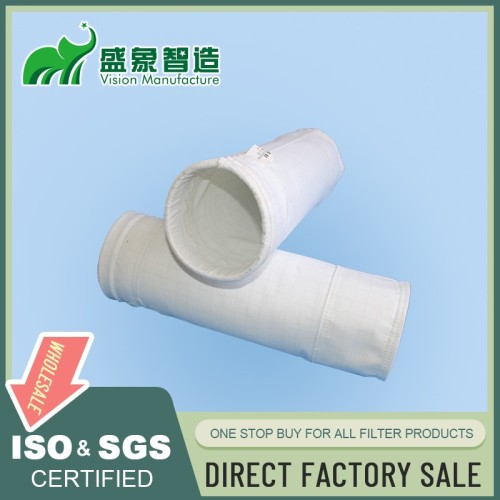
Cement Plant Dust Collectors Optimize Air Quality and Production Efficiency
I. Introduction
Dust collection is a critical component in cement manufacturing, essential for both environmental compliance and operational efficiency. This section introduces the various types of dust collectors used in cement plants and discusses their impact on improving air quality and enhancing production processes.
II. Types of Cement Plant Dust Collectors
Cement plants employ a variety of dust collection systems to address different environmental and operational needs:
- Baghouse Systems: Utilize fabric filters to capture fine dust particles.
- Electrostatic Precipitators: Use electrical charges to remove particles from the air.
- Cyclone Separators: Employ a vortex separation process to remove particulates.
- Wet Scrubbers: Use moisture to capture and remove dust particles.
III. Key Components
The effectiveness of a dust collection system depends on its components:
- Filter Media (Bags, Plates, etc.): The primary element that captures dust particles.
- Cleaning Mechanisms: Systems like pulse-jet or reverse air that ensure the longevity and efficiency of filter media.
- Fans and Blowers: Essential for creating airflow through the collector and capturing dust.
- Ductwork and Hoppers: Collect and remove dust from the collector to prevent re-entrainment.
- Control Systems: Automate the operation and monitoring of the dust collection process.
IV. Design Considerations
Designing an effective dust collector system involves several factors:
- Plant Layout and Space Constraints: Determines the placement and size of the dust collector.
- Dust Characteristics and Load: The nature of the dust affects the choice of filter media and cleaning mechanisms.
- Temperature and Humidity Factors: Can impact the performance of dust collection systems.
- Airflow Requirements: Necessary to calculate the fan size and system configuration.
- Material Handling Needs: Ensures that the system can handle the volume and type of material produced.
V. Operational Principles
Understanding the operational principles behind dust collection is key to optimizing performance:
- Dust Capture Mechanisms: How dust is entrained within the airflow and captured by filters.
- Filtration Processes: The stages of filtering and trapping dust particles.
- Cleaning Cycles and Methods: Regular intervals at which cleaning mechanisms activate to maintain filter efficiency.
- Material Reclamation Systems: Techniques used to recover materials from collected dust, enhancing sustainability.
VI. Performance Factors
Several performance metrics are crucial for evaluating dust collector systems:
- Collection Efficiency: The percentage of dust removed from the air.
- Pressure Drop Management: Minimizing resistance to airflow to maintain energy efficiency.
- Energy Consumption: The amount of energy required to operate the system.
- Emission Rates: Ensuring emissions are within regulatory limits.
- Reliability and Uptime: The system's ability to operate continuously without failures.
VII. Installation Process
Proper installation is crucial for the dust collector’s effectiveness:
- Site Preparation and Foundation Work: Ensuring the site is ready for equipment installation.
- Equipment Assembly and Mounting: Secure installation of the dust collector components.
- Ductwork Installation: Properly connecting ductwork for optimal airflow.
- Electrical and Control System Integration: Implementing controls for automated operation and monitoring.
- Commissioning and Testing: Verifies that the system is functioning correctly from the start.
VIII. Maintenance and Monitoring
Regular maintenance ensures the longevity and efficiency of dust collectors:
- Routine Inspection Schedules: Scheduled checks to identify any potential issues.
- Preventive Maintenance Practices: Guidelines on maintaining the system to prevent failures.
- Performance Monitoring Techniques: Tools and methods to continuously assess system performance.
- Troubleshooting and Repair Procedures: Addressing issues as they arise to minimize downtime.
IX. Regulatory Compliance
Dust collectors in cement silos must comply with various environmental and safety regulations:
- EPA Emissions Standards: Adherence to federal environmental guidelines.
- OSHA Workplace Safety Regulations: Ensuring worker safety in handling and operations.
- Local and State Air Quality Requirements: Compliance with local regulations regarding air quality.
- Industry-specific Guidelines: Standards specific to the cement industry.
X. Cost Considerations
Evaluating the cost-effectiveness of dust collectors involves:
- Initial Capital Investment: Upfront costs of system installation.
- Operational Costs: Ongoing expenses related to energy use and maintenance.
- Maintenance and Replacement Expenses: Costs associated with regular upkeep and part replacement.
- ROI Analysis and Payback Period: Assessing the financial return on investment over time.
XI. Environmental Benefits
Dust collectors contribute significantly to environmental sustainability:
- Reduced Airborne Particulate Emissions: Lowering pollutants released into the atmosphere.
- Improved Workplace Air Quality: Enhancing the air quality both within and outside of cement plants.
- Material Conservation Through Reclamation: Facilitating the recovery of materials from collected dust.
- Contribution to Sustainable Cement Production: Enhancing overall sustainability in cement production.
XII. Case Studies
Illustrative examples from various cement plants demonstrate the benefits of implementing advanced dust collector systems, highlighting improvements in air quality, efficiency in material handling, and compliance with environmental standards.
XIII. Technological Advancements
The future of dust collection in cement silos looks promising with:
- Development of Advanced Filter Media: Enhancements that improve durability and filtration efficiency.
- Smart Monitoring and Control Systems: Incorporation of sensors and monitoring systems for better management.
- Energy-efficient Cleaning Mechanisms: Innovations that reduce maintenance demands.
- Integration with Plant-wide Automation: Streamlining operations across facilities.
XIV. Conclusion
Dust collectors are indispensable in the cement industry, significantly improving air quality and material conservation. With ongoing advancements in technology and a strong emphasis on environmental compliance, these systems are set to become even more integral to industrial operations. Embracing these innovations is crucial for any facility looking to enhance its operational efficiency and environmental footprint.
Leave a comment

